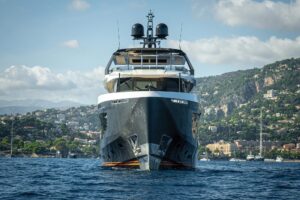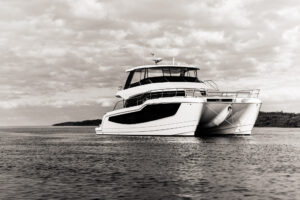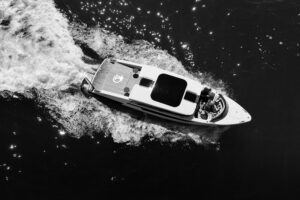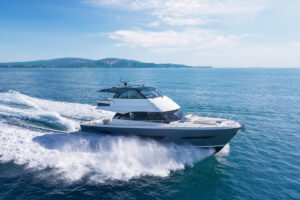Call it fate. When a yacht owner and the right yacht meet at the corner of passion and vision, the arrival point is awesome.
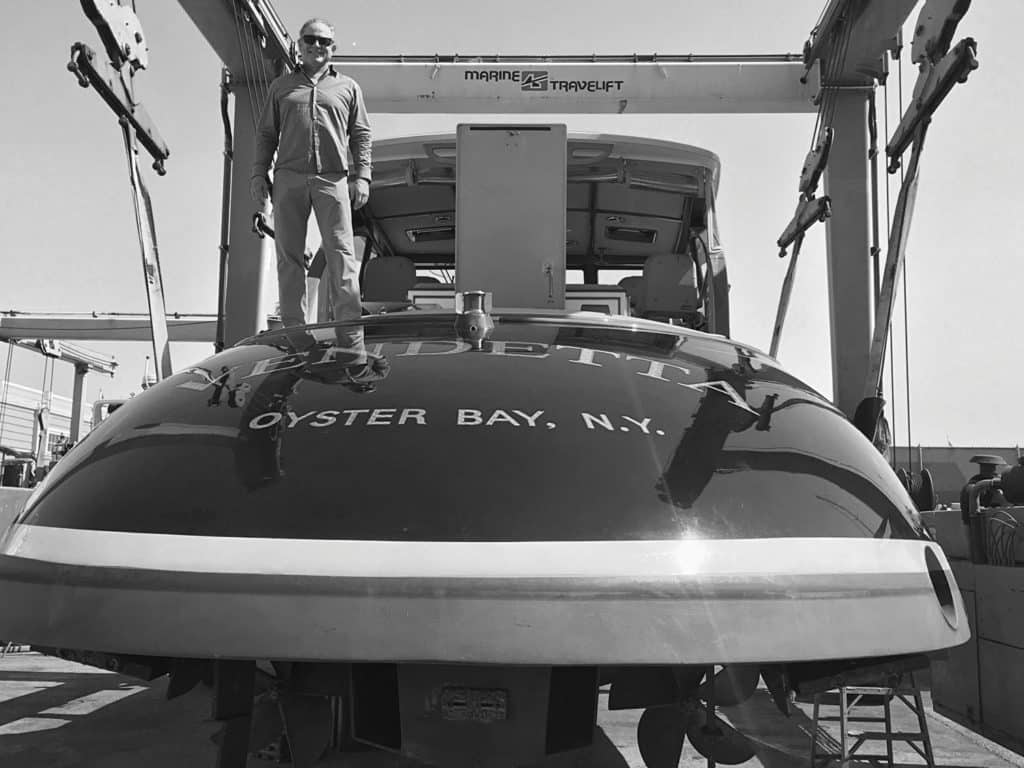
For one yacht owner, his journey to this point saw him buy a yacht that had been for sale for about six years. The pedigreed, one-off craft had retro styling and was purpose-built to run at around 50 knots. The owner wanted to maintain her style while transforming her from a utilitarian go-fast vessel for four to a “luxury-entertainment yacht for 12.” All the work had to be finished in Bristol fashion. And, of course, she would still need to run fast when desired.
The 56-footer, Vendetta, penned by naval architect Doug Zurn, was originally built in 2005 for Rock & Roll Hall of Fame musician Billy Joel. He’d wanted a plumb bow-style commuter yacht with a torpedolike stern, a boat reminiscent of those seen streaking down Long Island Sound to lower Manhattan during the 1920s and ’30s. In 2016, Joel donated Vendetta to the International SeaKeepers Society, a not-for-profit group that supports research to help protect the world’s oceans.
Her new owner, coming out of a Pursuit, fell for the look of the yacht and immediately had a new vision for her. He purchased Vendetta that same year, saying, “Her high level of design, engineering and quality of build is a rarity in an industry dominated by production boats.”
To that end, Vendetta has a variable deadrise, a modified-V hull form with convex sections forward, a 15-degree transom deadrise and a wave-splitting plumb bow, all resolving in her rounded stern shape. She is constructed with infused Kevlar and E-glass over Corecell foam core.
Zurn was enlisted to pen the yacht’s revamped look and layout, “to ensure her lines flowed seamlessly and her integrity was maintained,” the owner says.
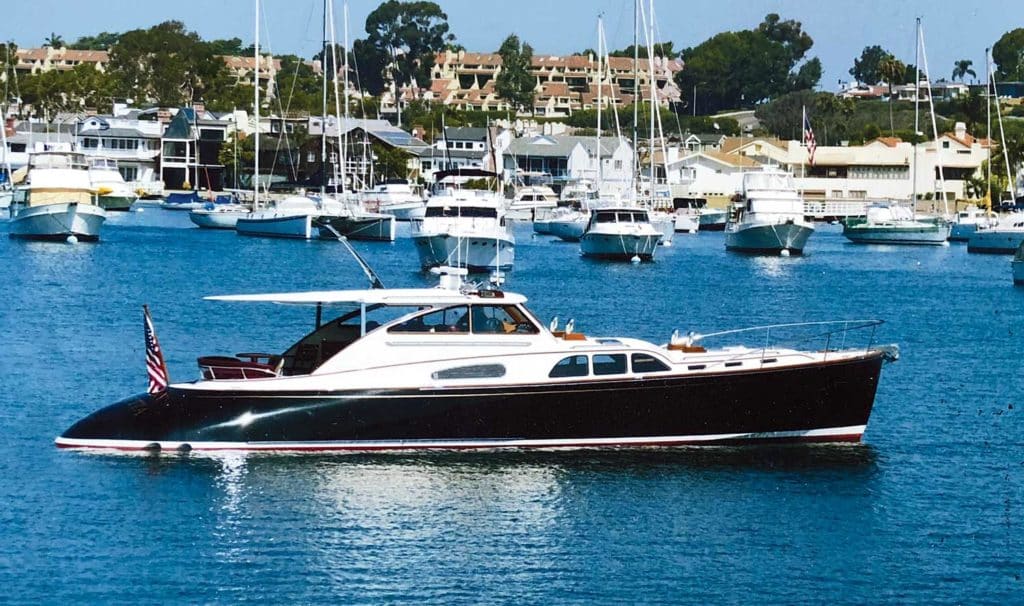
A major part of the refit was an aft-deck redo, which, like the original build, was done with foam core and E-glass to keep the structure light and strong.
“She originally had a deck and a hatch mast aft,” Zurn says, adding that the setup left a cavernous space underneath the cockpit. The plan was that Joel would stow his motorcycles there. That didn’t materialize, but her new owner saw the opportunity to change the real estate into a lounge space for guests to take in the sights while cruising up and down The Golden State, or while zipping across to Catalina Island from the boat’s new home port in Newport Beach, California.
Zurn worked through several design iterations for Vendetta the first time, so he revisited them when developing her refit plan. “Originally, the cockpit [concept] was a sunken cockpit, so we decided to make it flush deck to keep everyone on the same social level,” he says. Zurn used 3D modeling to give her new owner an accurate picture of how the new layout would look.
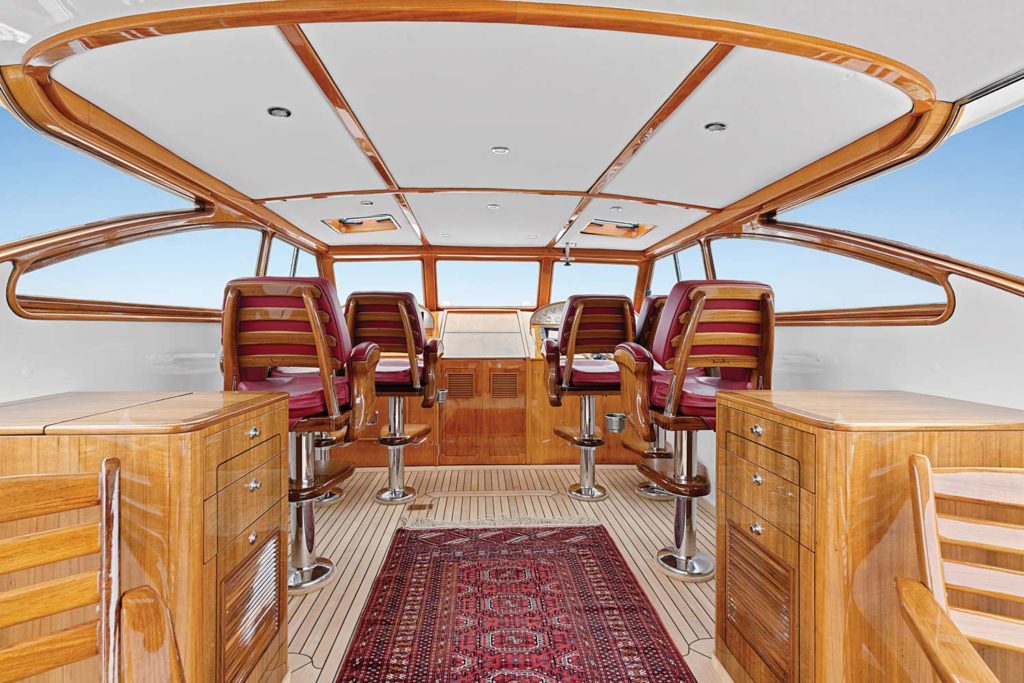
Her owner says she accommodates six guests in helm chairs, four in aft wraparound seating and two more in folding high-gloss teak chairs with a teak cabinet on each side to hold a bar, refrigerator and trash. “Because of her unique design, each part and modification was custom made. Nothing was off the shelf,” he says.
The refit work, completed by Newport Harbor Shipyard, included cutting out the aft deck space and building it lower into the yacht. The new cockpit created room for the settee, whose shape follows Vendetta‘s curved transom, making it look like part of the natural landscape and maintaining her low-profile, sinewy lines. The settee is placed around a varnished teak table.
“Now there is room for dancing,” Zurn quips. The cockpit, shaded in part by the superstructure overhang, has additional shading with a fixed canvas awning as well.
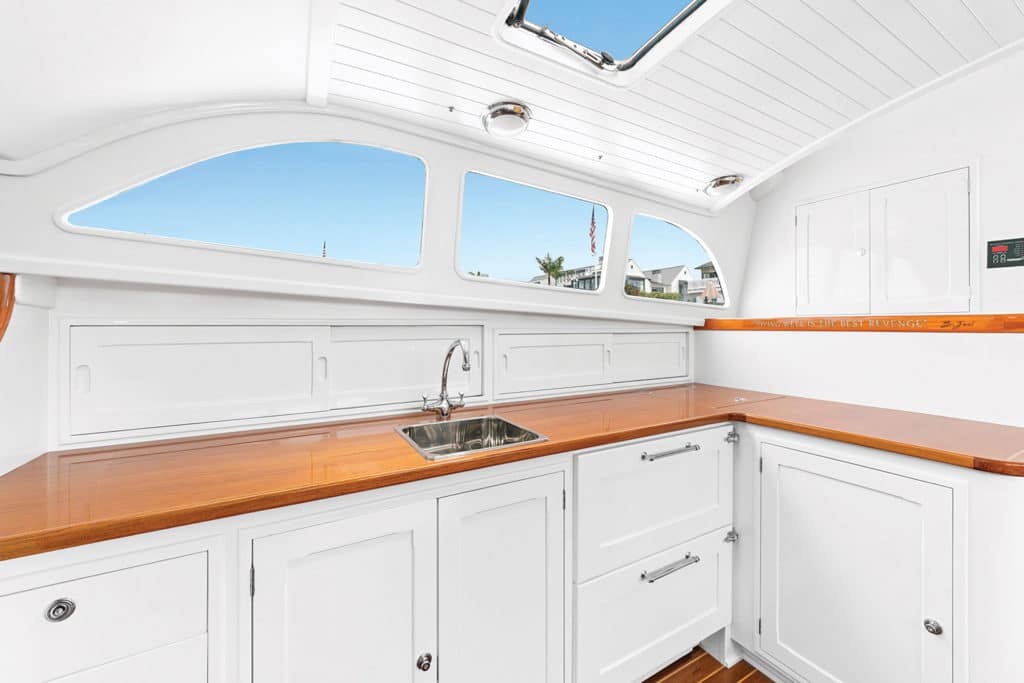
The cockpit was the primary structural change, but Vendetta received myriad other upgrades. The countertops, originally a beige Corian, were replaced with varnished teak. A carpeted salon sole is now teak and holly. Her interior paint was swapped out from white and cream to a “Herreshoff white” with mahogany trim.
“It’s very different from the original boat,” Zurn says. “He brought the level of finish up a huge amount.” Vendetta ‘s original build took about two years. Her refit took around 18 months.
Since the yacht now lives in Newport Beach, slow-speed harbor cruising was just as important to her new owner as hitting 50 knots. Amid the waterfront homes, moorings and army of Duffy electric boats that ply the local waters, slow speed is a necessity, not an option.
One of the ideas first floated was having drop-down electric motors, but Zurn says the concept wasn’t feasible, noting that Vendetta is a pretty “technical boat.” She is powered with twin 1,300 hp, 12-cylinder MAN diesels matched to Power Vent Surface Drive propellers. “It’s a surface drive, but it’s tucked into ventilated tunnels, so you get the same economy as a transom-mounted surface drive, but it’s protected underneath the hull, half in the water, half out of the water,” Zurn says. “The other advantage is not dragging props and shafts through the water, reducing hydrodynamic drag.” In the propulsion system’s normal state though, Vendetta has a slow idle of 9.5 to 10 knots. That wouldn’t work for her owner’s needs.
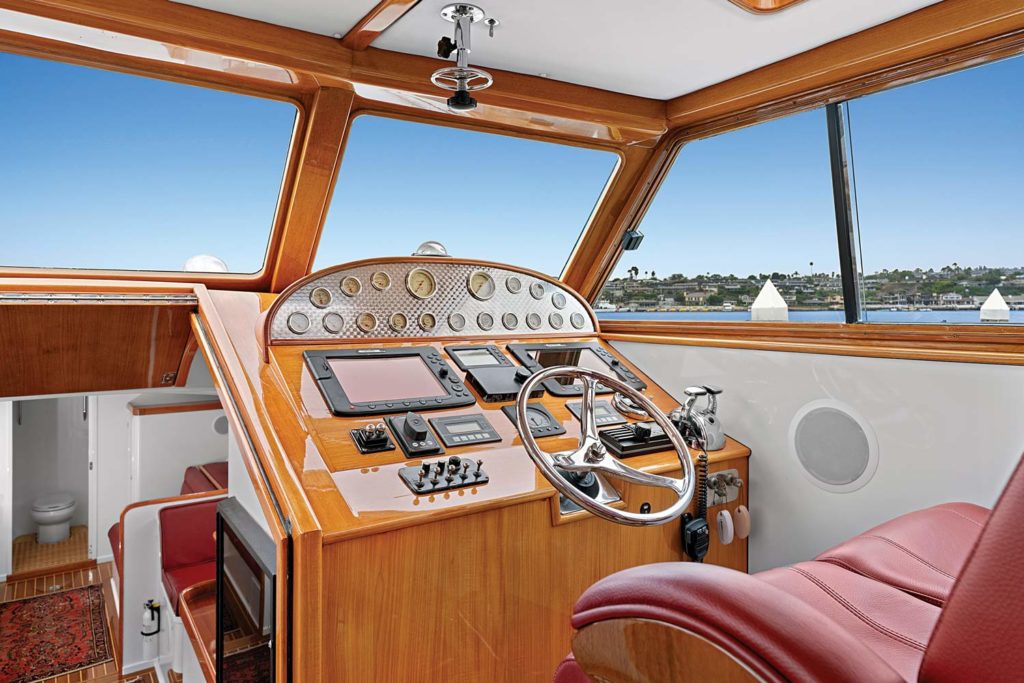
In the end, trolling valves solved the slow-speed issue. Her owner says he can casually cruise around Newport Harbor at about 5 knots. He also added a stern thruster (a bow thruster was already installed) to help with close-quarters handling.
And despite the upgraded punch list, Zurn says more changes are likely to come.
“I am anticipating more work eventually to the boat because there are no sleeping accommodations,” Zurn says. “We had done some cabin layout work over the years. Billy had us do some design work to show people what could be done with the boat. We have different accommodations [options] for the boat.”
For now, Vendetta’s owner seems to be enjoying the yacht he recreated by following his passion and vision. And that’s awesome.

